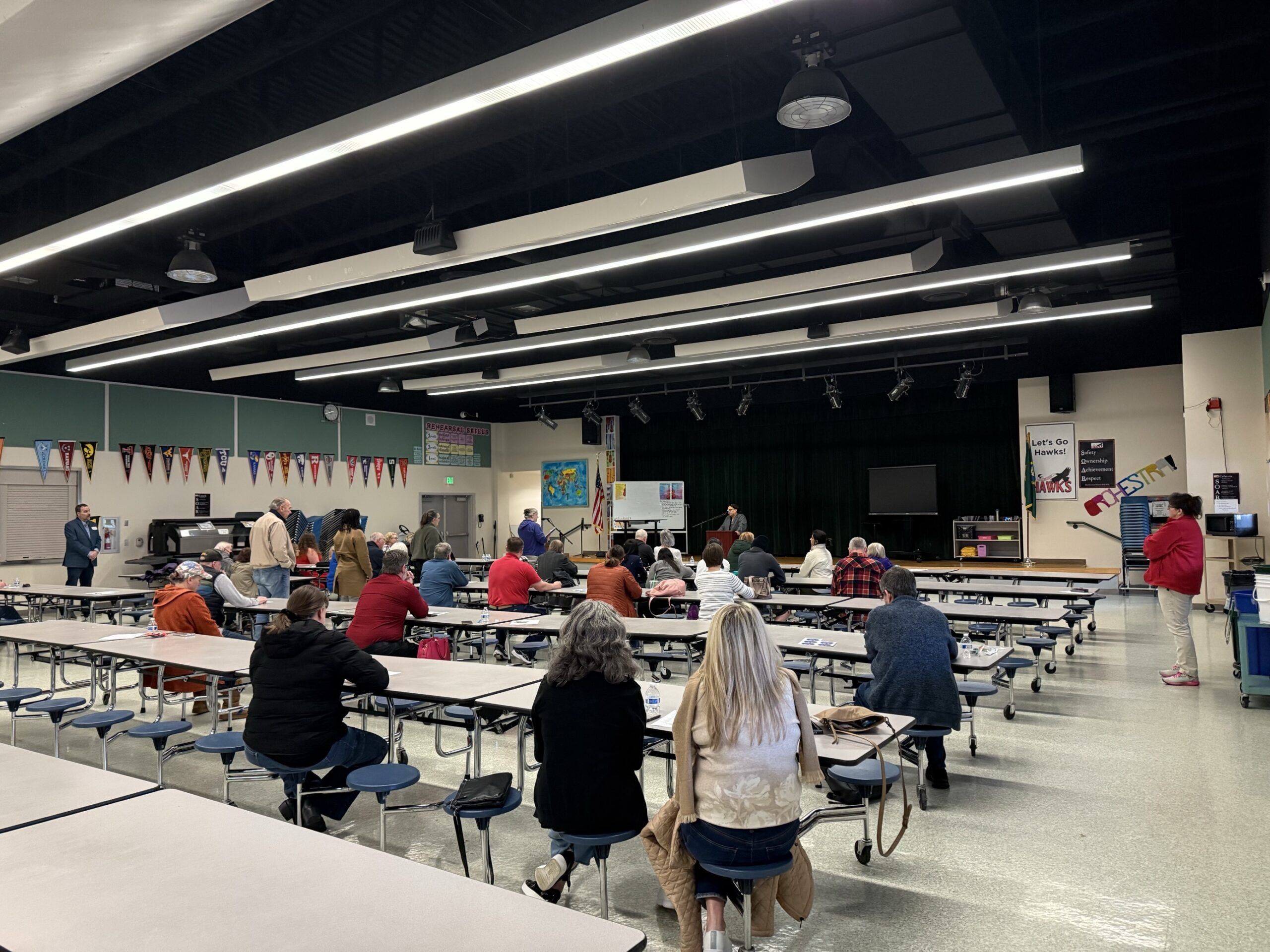Dear Friends and Neighbors,
Before I get into the latest on what’s happening in Olympia, I want to quickly thank all of you that joined me at my recent town halls. It was fantastic to see so many people turnout and to hear your concerns. I received many thoughtful questions that sparked important conversations about the issues that matter most to our community.

Your voices help shape my work in Olympia, and I look forward to continuing the conversation. If you couldn’t make it, my door is always open — learn more about how to get in touch with my office here.
Many of you asked about the state’s budget, and how we’re going to balance it. Over the past year, I’m sure you’ve heard about Washington’s budget challenge, and you may have seen recent news reporting about the various proposals for solving it. I wanted to take some time here to talk more about that.
In my previous newsletter I talked about the devastating impact an “all cuts” budget would have – jeopardizing everything from healthcare services for our seniors to support services for our children’s educations. So, we are looking at a set of revenue proposals to help avoid the most disastrous impacts:
- The FIT Tax: A Financial Intangible Assets Tax on assets like stocks, bonds, and mutual funds, with the first $50 million in assessed value exempt. This would impact around 4,300 wealthy Washingtonians and could generate around $2 billion per year. The money would go to an Education Legacy Trust Account to support Washington families and fund investments in K-12 schools.
- The B&O Tax: A 1% Business & Occupation tax surcharge on businesses with a taxable income over $250 million. This would apply to about 400 of the wealthiest corporations in Washington. It also increases the surcharge on some financial institutions from 1.2% to 1.9%. This would impact about 200 institutions with a net income of $1 billion or more. This could generate nearly $2 billion that will shield essential public services from economic downturns and political uncertainty, creating a more stable and sustainable financial future for the state.
- The property tax change: This allows for property tax revenue growth to increase based on inflation and population changes, not to exceed 3 percent. This could increase funding for state investment in K-12 schools by as much $150 million in fiscal year 2027.
I want to talk a bit more about the property tax change, because it can be quite confusing. This is not a direct increase in property taxes. Constitutionally, the state cannot do that. This proposal would allow the state and local entities to increase their revenue growth limit. Let me explain with an example:
Problem:
If Anytown, WA collected $100 in revenue last year, our laws say, Anytown could only collect $101 dollars in revenue this year. That’s because of a 1% revenue growth limit. This automatically puts Anytown in bind because of inflation, cost increases, and fluctuations in population.
Soon, Anytown is struggling to pay for police officers or other public safety measures and is foregoing school maintenance and other education funding due to a lack of revenue.
Proposed Solution:
The proposed property tax change would raise the revenue growth limit to a maximum of 3%. So now, Anytown can collect as much as $103 this year. The method of collection would be based on inflation and population changes, not necessarily only home values. Some people may experience a slight increase, while others may even experience a decrease depending on a number of different factors. But the bottom line is, this is a modest change that could have a massive impact that improves services and the lives of people all over Washington.

None of this is a done deal. There has been and will continue to be a lot of debate over these proposals. Your voices and opinions are an important part of that. You all told me at our town hall about the tough decisions your families face around the kitchen table, balancing budgets and making ends meet. That’s why I’m committed to ensuring that any financial decisions at the state level are made with the same responsibility and care we use in our own homes. We cannot afford to burden working families and local businesses or harm those already struggling by balancing the budget on their backs. We must pursue sustainable policies that not only address our current fiscal situation but set us up for a brighter future where we are fully funding our children’s educations, ensuring Washington remains an affordable and accessible place to live and raise a family, and where the wealthy pair their fair share.
You can see more highlights from the proposed budget here.
My focus is on finding the right balance—protecting vital services while also being fiscally responsible. I’m working closely with colleagues to look at where we can cut and where we can grow, and I welcome your input as we continue to prioritize investments that make our communities safer, stronger, and more resilient. Your feedback is vital in helping us make decisions that truly serve our people.
We are working hard to ensure our budget minimizes harm and maximizes our state’s potential by putting the people of Washington first.
That’s all for now. Please keep an eye out for my next legislative update and again, please get in touch with my office here if you have any questions or concerns.
Sincerely,
![]()
Rep. Brandy Donaghy
